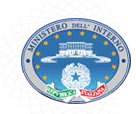Managing Asylum Flows
International Conference
“Managing asylum flows: strengthening the tools, strengthening the system”
Rome 18-19 November 2014
The ISMU Foundation took part in the International Conference “Managing asylum flows: strengthen the tools, strengthen the system”, held in Rome on 18-19 November. The event, organized by the Department for Civil Liberties and Immigration of the Italian Ministry of Interior, is part of the initiatives coordinated by the Italian Presidency of the Council of Ministers of the European Union.
The Conference saw the participation of several officials from national and European institutions, academics and representatives of international organizations and NGOs, who discussed the main issues related to asylum policy that occupy the agenda of policy-makers at the national and European level.
The complexity that characterizes asylum flows was underlined by Robert Visser, Director of EASO (European Asylum Support Office), who underlined how asylum flows always come as “mixed flows”, that is including people asking for international protection alongside migrants coming to Europe for economic reasons. While in 2013 demands for asylum in the EU reached a record high of 435.000, Visser underlined the high fluctuations in the main nationalities of asylum seekers occurred in the last years, determined by the rapidly evolving geopolitical scenarios in countries of origin. According to Visser, nationality of asylum seekers should also be taken into account when looking at the divergences in Member States’ recognition rates. In fact, the recognition rate of a Member State that receives mostly Syrians (who have an overall recognition rate in the EU of about 100%) is expected to be significantly higher than that of a Member State receiving asylum seekers from Western Balkans countries (who instead have an overall rejection rate of about 90% in 2013).
Turning to the political agenda, a priority shared by several speakers regards the full and proper implementation of the Common European Asylum System (CEAS), whose main legislative components were revised during 2013. As pointed out by Michael Jansen of the German Ministry of Interior, asylum systems in Member States are still characterized by a high degree of diversity, with regards to evaluation of asylum claims, reception conditions and management of asylum procedures. Several speakers also denounced shortcomings in the application of the Dublin’s Regulation, in particular a lack of use of the family reunification provisions contained in the Regulation.
A uniform implementation of European legislation is also a precondition for creating mutual trust among Member States with regard to the standards of their asylum systems. Matthias Oel of the European Commission pointed to the fact that currently mutual trust is lacking both between Northern and Southern countries and between Member States and European institutions. According to Oel, in order to overcome this situation, Member States’ active participation is required in those initiatives organized by the Commission and EASO that are aimed at strengthening cooperation and sharing information and best practices among Member States. Another priority on the Commission’s agenda underlined by Oel concerns the reinforcement of the European Resettlement Program, a point that will be discussed at the next EU Relocation Forum, together with the possibility to introduce new legal avenues to access asylum in Europe and the further development of Regional Protection Programs in countries of first asylum.
Mutual trust is also a prerequisite for moving towards the establishment of mutual recognition of refugee status across the EU, a central issue on the agenda of the Italian Presidency that was restated by Mario Morcone, Head of Department for civil liberties and immigration of the Italian Ministry of Interior. To some of the main aspects of mutual recognition, including its legal foundations and the prospects of introducing this instrument in the framework of EU asylum law, were dedicated the interventions by Prof. Valsamis Mitsilegas of Queen Mary University London and by Prof. Chiara Favilli of Florence University.
The first of the two workshops sessions was devoted to the presentation of proposals and initiatives aimed at improving the asylum reception system. In a workshop focusing on Italy’s reception system, Daniela di Capua, Director of SPRAR (Protection system for asylum seekers and refugees) described the main pillars around which the reform of the system recently undertaken is structured. In particular, she explained that aim of the reform is to substantially increase the capacity of the system and to streamline its organizational structure.
The second workshops session presented some of the main activities currently performed by EASO. More specifically, a workshop was organized to describe the results of an EASO-coordinated pilot project on joint processing of asylum claims that currently sees the participation of five Member States, while another one dealt with the creation of a network for the sharing of COI (Country of origin information). The session was completed by a workshop dedicated to illustrate the main features of the mechanism for early warning, preparedness and crisis management envisaged by the recast Dublin Regulation, to which EASO contributes by providing its expertise.
See also here
 English
English Italiano
Italiano
